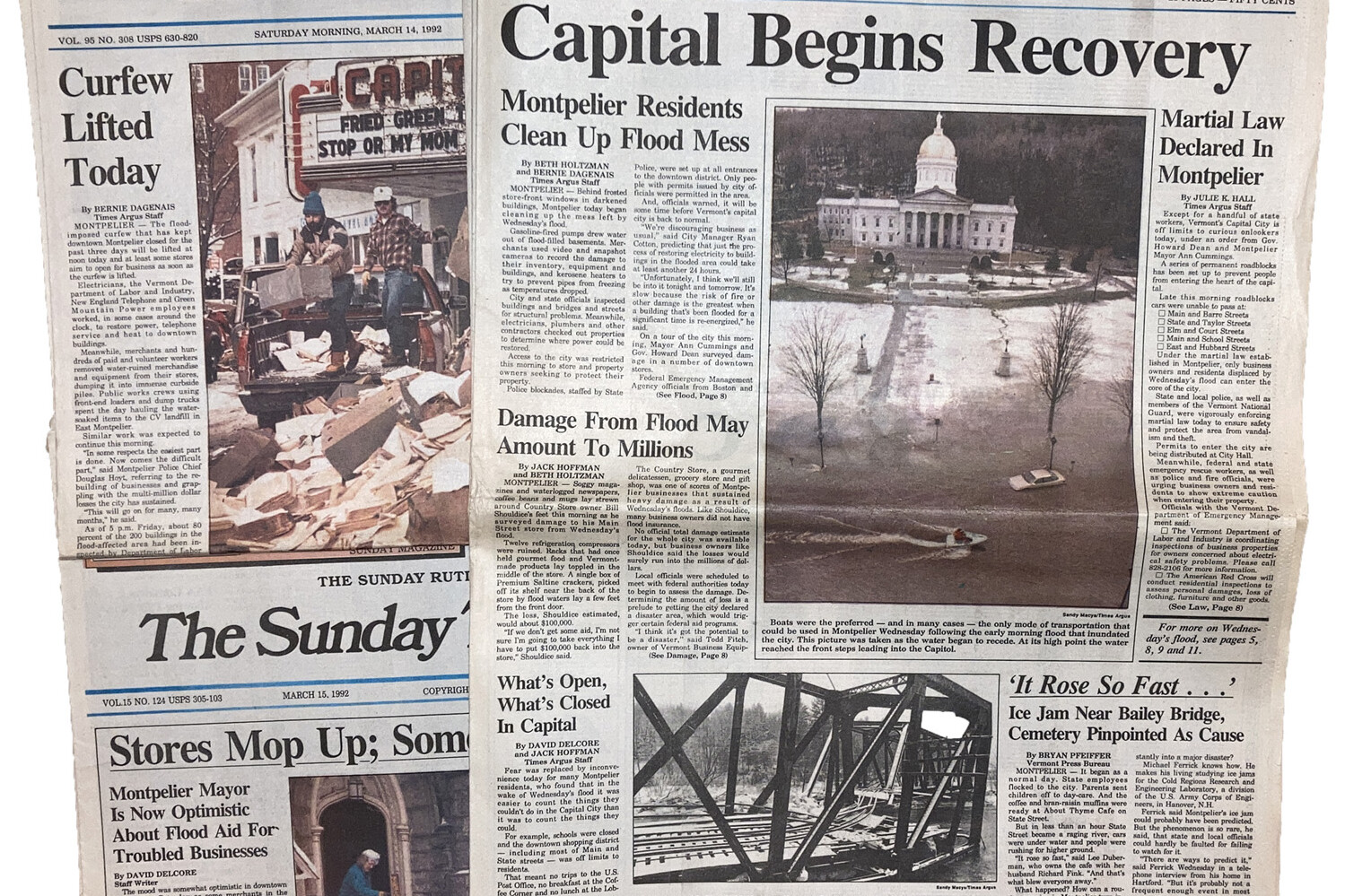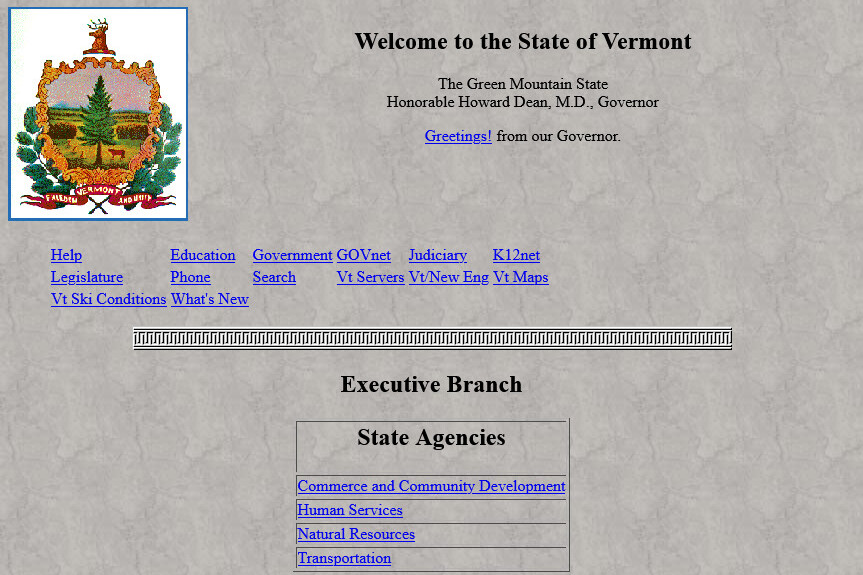1990s - The Evidence
How do we know what happened in Vermont in the 1990s?
Streets in Vermont’s capital city were under water on March 11, 1992. An ice jam(when large chunks of ice block a river and cause the water to back up behind the jam) blocked the Winooski River, causing flooding in Montpelier. Some Vermonters heard about the disaster on the radio or television. Others read articles in the newspaper. No one shared the news on social media or their smart phones. That technology did not exist yet.
The Times Argus newspaper reported stories about the flood. Photographs, taken with film cameras, showed how high the water rose. A booklet described the clean up after the flood. These newspapers, photographs, and booklet are primary sources(materials with first-hand information about the time period when they were created). Historians use sources from the event to learn what happened.
Primary sources also tell what was important at the time. A poster reminded people to “Recycle, Re-use, Renew.” A brochure listed what items could be recycled and where. These sources are evidence of how Vermonters protected the environment in the 1990s.
Primary sources also expose debates in history. In 1997, the state changed the way Vermont towns pay for schools. The new law, called Act 60, tried to make property taxes(the amount of money the government collects based on the value of land and buildings that someone owns) more fair. Some people liked the new law. Other people disliked Act 60. Bumper stickers from the time show the two sides.
Artifacts(objects that people make or use) are also primary sources. A group of Vermonters did not want a Walmart store built in Williston. To protest, they made a display covered with newspapers, bumper stickers, and other documents. Over 25 years later, historians can see how the group tried to fight against sprawl(spread out in a way that is not controlled).
Old websites can be primary sources. In the mid-1990s, people in Vermont started to use the World Wide Web(the internet; also abbreviated “www”). Companies, like Sovernet in Bellows Falls, allowed Vermonters to get emails and browse online. Historians can look at old websites in the Internet Archive(a collection of historic documents and primary sources) to learn about the 1990s.
Archives and museums save primary sources. People might also save papers, photographs and artifacts from the past. Ask your parents and teachers if they have any primary sources from the 1990s.
Thinking About History
Historians ask questions to think deeply about history.
What primary sources tell the story of your life today?
Not all historic primary sources are saved. How can we learn about history that is not written down or photographed?
Learn More
Follow the links below to explore related topics.
Read about the 1992 Montpelier Flood in the Ice & Water booklet
Look at a recycling brochure from 1999. How has recycling changed since then?
Watch this interactive video to learn more about primary sources
Read The Ripple Effect of Change from Historic Roots Magazine in 1998
Copy and paste this citation to show where you did your research.
Vermont Historical Society. "1990s - The Evidence." Vermont History Explorer. Accessed December 26, 2025. https://sitemap.vermonthistoryexplorer.org/learning-about-the-1990s


